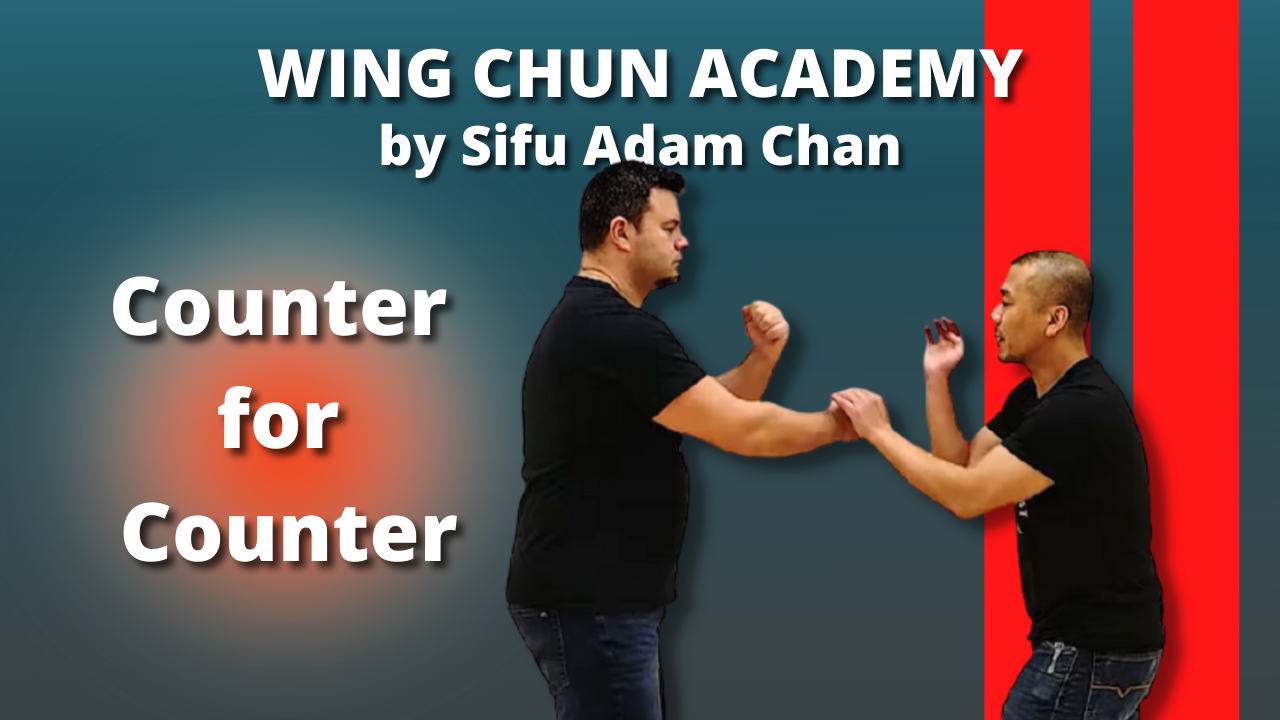Counter for counter
Nov 06, 2021

This is a training method to enhance one's reflexes. For that we will take all the blocks and hands we have learned in Sil Lim Tau and connect them into an endless flow. However, before I start I'd like to make one thing clear: flow drills, counter for counter, is NOT a combat application, it is a way to increase one's attributes, in this case, one's reflexes.
Using a metaphor, look at a western boxer, he will do pull-ups, push-ups, sit-ups to increase his muscles strength attributes, explosiveness, and endurance, BUT it is NOT for combative application. He would never do push-ups during a fight tho, right? This is obvious! But for some reason, people seem to have a hard time understanding this when it comes to flow drills so please keep this in mind: flow drills increase one's attributes but they are NOT combating applications.
Flow drills are extremely useful when use for the right purpose in one's training, but they are a great liability when used improperly.
There are many ways to do a flow drill from a Wing Chun point of view and there are very popular drills like the Bong Lap Sau drill and the Chi Dan Sau (single hand sticking) and the beginning phase of Chi Sau. However, the truth is any of the very basic hand's exercises of Wing Chun ie. Pak Sau, Jum Sau, Lap Sau, Wu Sau, Tan Sau, Gan Sau, etc can be done as a flow drill. Here are two ways everyone could train it:
1) During basic hand exercise - after one enters with an attack, say a Pak Da - you can get your training partner to feed any block he wishes and this gives you a chance to flow into a trapping attack OR you can get your partner to feed random strikes, kick, grabs... anyway he wishes. Having a random stimulus gives you a chance to see if you will freeze or if you will flow with the proper responses. In order for you to learn and see where you are at, it is important to go slow at first and slowly progress and increase speed and power from the feeder.
2) Another great way after step one is to get the feeder to react with defense and an attack at the same time, now it is 100% interactive in the sense that there will be a back and forth, my turn your turn flow exchange. This is a great way to enhance one's reaction time and angles and the use of different timing, it also teaches one to adjust speed mid-flight.
Just keep in mind that without this flow interactive phase, it is very difficult to get your hands to "think for themselves" and this is one of the major pieces missing in getting your body to move without thinking. Too often, the students are taught technique after technique but very little attention or answer is given when the student asks why even though they learn a technique, they can't seem to pull it off in real-time when thinking is not possible. If you are interested in developing these flow drills techniques as well as the Wing Chun levels and forms, I'd like to invite you to take one FREE CLASS on my website. The first concept of the first Wing Chun form is shown and I bet you will be surprised with the amount of content you will get just from one single class.
But if you are looking forward to seeing more advanced techniques, I'm going to leave the link to the Chum Kil training where you will be able to not only go deep in today's article subject but all the second Wing Chun form concepts, Wing Chun Solo training program and also the applications of it.
Stay safe and train hard.
Sifu Adam Chan
Stay connected with news and updates and and the latest Kung Fu Report episode !
Join our mailing list to receive the latest news and updates from our team.
Don't worry, your information will not be shared.

